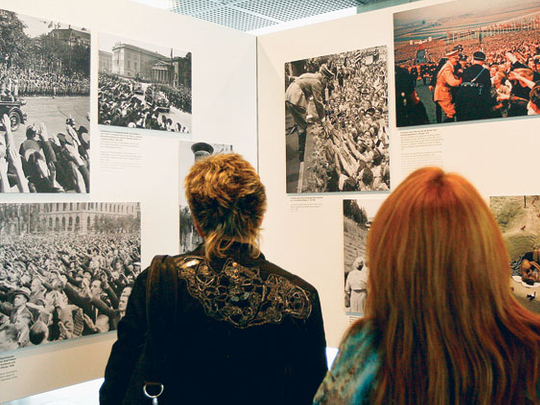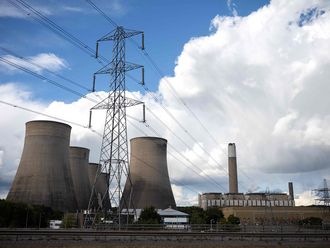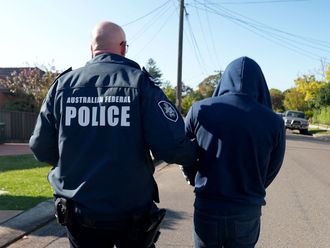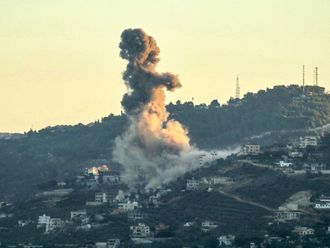
Berlin: A knee-high wall, a rusty gate, the brick foundations of razed buildings — such are crumbling remnants of the Nazi empire in the heart of Berlin known by historians as the "centre of evil".
Sixty-five years after the end of Second World War, a new exhibition centre is opening this week on the site where the feared Gestapo, SS and other Nazi agencies ran Adolf Hitler's police state from 1933 to 1945.
The centre adds a museum and a library to the previously Spartan exhibit known as the "Topography of Terror," which has attracted as many as 500,000 annual visitors for the last two decades to the former Prinz Albrecht Strasse. New exhibits document how Hitler's Reich operated and how Germans dealt with the dark chapter of history in the aftermath of Second World War.
The area — adjacent to the Martin-Gropius-Bau arts museum — once housed not only Hitler's secret police Gestapo and its prison, but also the leadership of the SS, the Nazi party's paramilitary unit, and the Reich Security Main Office, which combined and coordinated all different police agencies.
Nazi leaders such as Heinrich Himmler, Reinhard Heydrich, and Adolf Eichmann all had offices on the street.
Authenticity
The authenticity of the site is what draws people's interest, from the casual visitor to the detailed academic, said the centre's director Andrea Nachama.
"People coming to Berlin still want to know ‘Where were the agencies of terror? Where was the capital of the Third Reich?'" Nachama said. In addition to the new buildings, the new exhibit opens up the entire site, he said.
"Now, they can see the whole area for the first time, all 4.5 hectares not just one-eighth of it. They can see the layers of history on the site and they can come in and learn where the terror against millions was initiated and planned," he said.
The Nazis could have located all the agencies in more convenient locations at the edge of town, but chose to put them into the heart of their capital for a reason, Nachama said.
"Repression was used for political purposes," the historian said. "Fuehrer, Gestapo, and concentration camp were the key words of the Third Reich."
All citizens were to see clearly what would happen if they resisted — they would end up at Wilhelmstrasse or Prinz Albrecht Strasse, the street addresses of the complex that housed the offices.
The buildings were damaged during the war and levelled afterward, and the whole area, right next to the Communist-era Berlin Wall, was more or less forgotten.
Over the decades, it housed construction companies and a so-called autodrome where West Berliners could practise their driving skills before seeking a licence, and much of the site remained covered by rubble, grass and trees.
"It was the attempt to let grass grow over history in the true sense of the word," said Nachama, a former leader of Berlin's Jewish community.
It was not before the 1980s that interest in the Nazi-era significance of the site budded again and historians made part of the area accessible to the public.
While the city of Berlin and Germany's federal government came up with plans for a museum-like documentation centre in the late 1980s, planning errors and cost over-runs held up the project for more than 20 years before it was finally completed.
Nachama said it cost $12 million (Dh44.13 million) to raze part of a building that was started in the 1990s but proved unusable. The new documentation centre — a simple, but elegant single-story pavilion — cost some $25 million and stayed within budget, he said.












